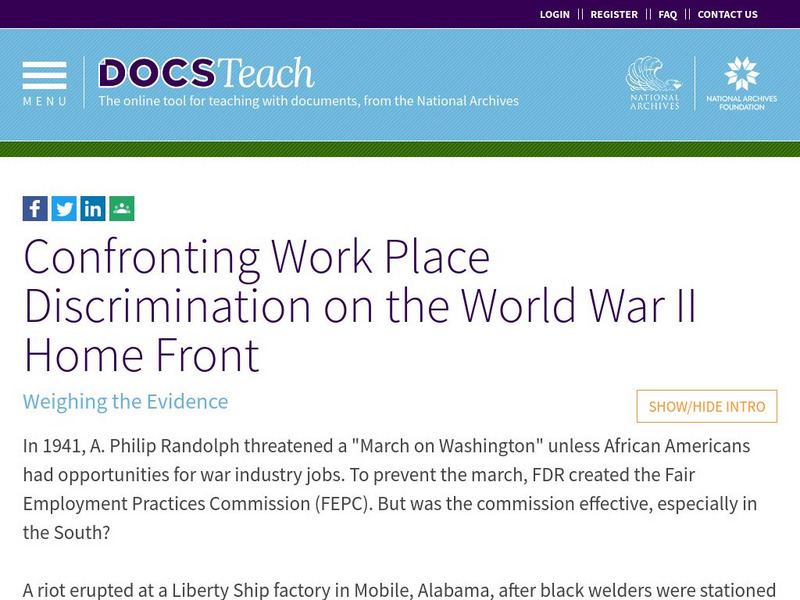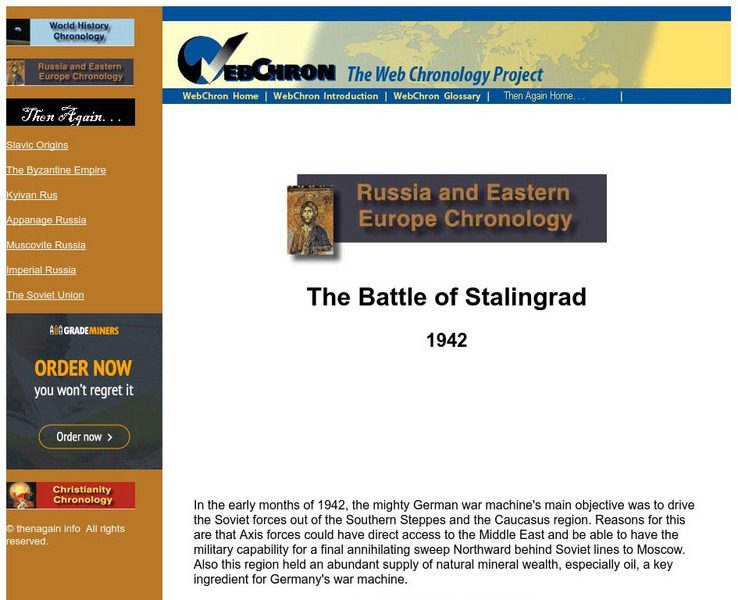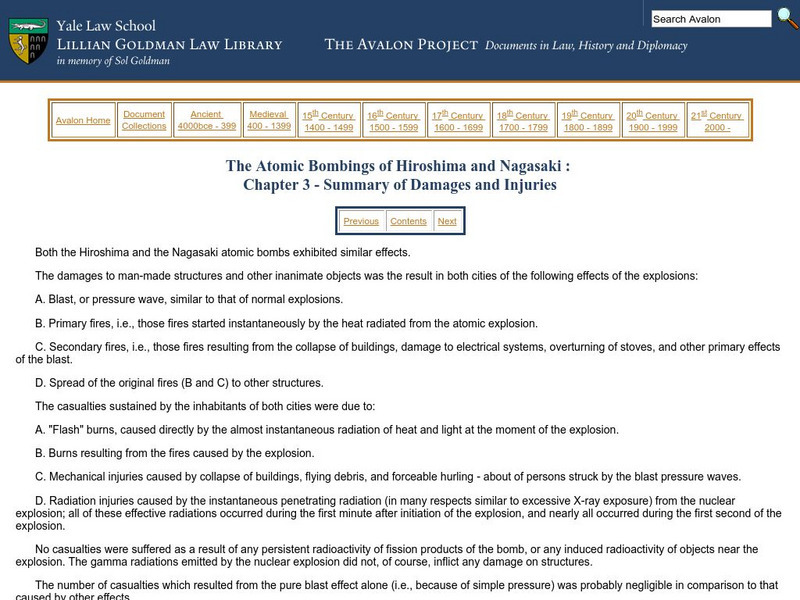Hi, what do you want to do?
Curated OER
The Great Depression WebQuest
Tenth graders explore the events of the Great Depression. They analyze the events and select those most important to contemporary people and the future of the nation. Students create a PowerPoint presentation over the Great Depression.
Curated OER
Denying Civil Rights
High schoolers continue their examination of the United States Constitution. Individually, they identify events in which the government has limited our civil rights and write an essay. In groups, they debate the issue and answer...
Curated OER
C¿¿sar Ch¿¿vez, Organizes the Farm Workers Association - Act I, Scene I "The House Meeting"
Eleventh graders analyze the development of federal civil and voting rights for minority groups. In groups, they discuss how Cesar Chavez organized the farm workers and the techniques he used when protesting. They define and practice...
Curated OER
Hiding and Seeking Lesson Plan
Students watch a film in order to broaden their view of tolerance after the Holocaust.
Curated OER
Patchtowns: Big Industry, Little Towns
Students explore what it was like to live in a coal mining town. For this history lesson plan, students discuss specific details about the lives of coal company workers and their families.
Curated OER
Learning From Document - Public Laws
Young scholars research primary sources about the Bracero worker program. In this primary source lesson, students investigate two public laws along with other documents to determine if the Bracero worker program was implemented properly....
Curated OER
GET THE POINT!
The student will measure the width of the horns on drawings of longhorn cattle and then convert the measurements from inches to centimeters and from inches to feet.1. Review with students the steps required to measure an item and to...
Curated OER
Hiroshima and Nagasaki: Still Teaching Lessons To This Generation
Discuss Laurence Yep's novella, Hiroshima, to inspire future historical fiction writers.
Curated OER
Documents Related to Churchill and FDR
Students groups divide up into 2. One gathers 10 facts about FDR and the other gathers 10 facts about Churchill. On the board, they compile that facts gathered in two separate columns so they can compare and contrast these two men.
Curated OER
African Independence Movements
In this African independence movement activity, middle schoolers respond to 6 short answer questions that accompany a reading selection featuring Uganda, Guinea, Kenya, and Ghana. Students also complete a graphic organizer based on the...
Curated OER
Cartoons for the Classroom: Drawing on a Familiar Icon
For this current events worksheet, learners analyze political cartoons about the feature American icons. Students respond to 4 talking point questions.
Curated OER
Veterans Day Lesson Plans
We can take a moment to recognize the soldiers who served and protected our country with Veterans Day lesson plans.
Curated OER
Lessons from the Holocaust; Hitler's Germany
Students explore Nazi Germany by completing several worksheets. In this Adolf Hitler lesson, students identify Hitler's role in the holocaust, his role in the German community and his mindset. Students read the poem "The Hangman" by...
PBS
Pbs Learning Media: The Power of Propaganda in World War Ii: Wartime Propaganda
In this interactive lesson, students use primary sources, including posters, documents, artifacts from The International Museum of World War II, and videos, to examine how and why propaganda was used by combatant nations with such...
Brown University
World War Ii: Diversity in American Society
Detailed and comprehensive picture of the social changes and events in the United States during World War II. Includes legislation and its effects, race riots, the position of women in the work force, African Americans and job...
Annenberg Foundation
Annenberg Learner: A Biography of America: World War Ii 1941 1945
Interactive feature deals with the morality of total war, and its effects on those who fought, died, and survived it, focusing on Japanese Americans living on the West Coast. Was the wartime internment of Japanese Americans appropriate?...
National Endowment for the Humanities
Neh: Edsit Ement: Jazz and Ww Ii: A Rally to Resistance, a Catalyst for Victory
Lesson plan that teaches the roles that jazz music and jazz musicians played in the war effort and that demonstrates the effect that the war had on jazz in America.
US National Archives
Docsteach: Confronting Work Place Discrimination on the World War Ii Home Front
In this activity, students will analyze primary sources and evaluate the degree to which they demonstrate Civil Rights advances following President Franklin Delano Roosevelt's 1941 Executive Order providing equal opportunity in defense...
Other
Bringing History Home: Ww Ii Home Front
In this 5th grade unit, students study the World War II home front using primary sources. After an introduction to the origins of the war, they study the effects of the war on the U.S. economy; citizen participation in the war effort...
Other
Nagasaki University: Medical Effects of the Atomic Bomb at Nagasaki
This resource provides data about the physical destruction of Nagasaki, the medical aspect, and survivor stories.
US Holocaust Memorial Museum
U.s. Holocaust Memorial Museum: Jewish Population of Europe in 1945
Article describing in statistical form the devastating effects of the Holocaust on the Jewish population and the flight of Jewish refugees during and after World War II in post-war Europe.
Then Again
Then Again: Web Chron: The Battle of Stalingrad
This site covers the events immediately before, during, and after the Battle of Stalingrad. Not only does it present the facts, it also includes information on the effects of this battle.
Columbia University
Columbia University: Structural Realism After the Cold War [Pdf]
In his article "Structural Realism after the Cold War", Kenneth N. Waltz examines the growth of liberal democracies following World War II and the Cold War and this growth's effects on nation-building in the twentieth century. (37 pages)
Yale University
Summary of Damages and Injuries
Outlines the devastation the atomic bomb had on Hiroshima and Nagasaki, Japan.
























